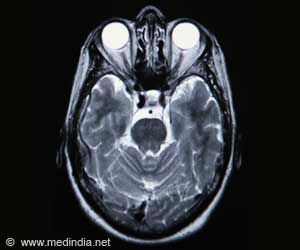
Researchers identified functional differences in the brains of APOE4-positive and APOE4-negative people. Red indicates increased connectivity among regions at rest while blue shows decreased connectivity.
"We looked at a group of structures in the brain that make up what's called the default mode network," said lead author Yvette I. Sheline.
"In particular, we are interested in a part of the brain called the precuneus, which may be important in Alzheimer's disease and in pre-Alzheimer's because it is one of the first regions to develop amyloid deposits. Another factor is that when you look at all of the structural and functional connections in the brain, the most connected structure is the precuneus. It links many other key brain structures together."
The research team conducted functional MRI scans on 100 people whose average age was 62. Just under half of them carried the APOE4 variant, which is a genetic risk factor for late-onset Alzheimer's disease.
Earlier PET scans of the study subjects had demonstrated that they did not have amyloid deposits in the brain. Amyloid is the protein that makes up the senile plaques that dot the brains of Alzheimer's patients and interfere with cognitive function.
Advertisement
"Their brains were 'clean as a whistle,' " said Sheline, a professor of psychiatry, of radiology and of neurology and director of Washington University's Center for Depression, Stress and Neuroimaging.
Advertisement
Sheline's team focused on the brain's default mode network. Typically, the default network is active when the mind rests. Its activity slows down when an individual concentrates.
Subjects don't need to perform any particular tasks for researchers to study the default mode network. They simply relax in the MRI scanner and reflect or daydream while the machine measures oxygen levels and blood flow in the brain.
"We make sure they don't go to sleep," Sheline said.
"But other than not sleeping, study participants had no instructions. They were just lying there at rest, and we looked at what their brains were doing."
The study has been published in the Journal of Neuroscience.
Source-ANI












